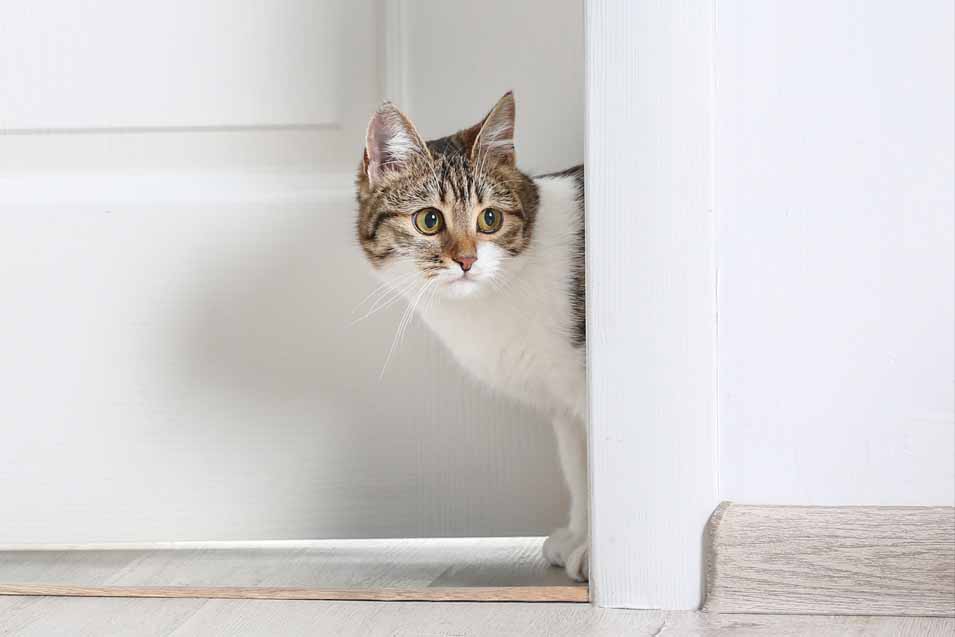It’s a cat owner’s worst nightmare – for some reason, your cat has stopped using the litter box. There are many possible causes to litter box refusal, some physical, some psychological. Luckily, there are also some things that you, the cat owner, can do to try to persuade your cat to start using the litter box again.
Physical Causes
The first thing that cat owners should do when they notice that their cat isn’t using the litter box is to make sure a medical problem is not causing the refusal. Cats who have certain physical conditions may stop using the litter box. It’s important to consult your veterinarian, especially if your cat is older, to see if there might be an underlying medical cause to his litter box refusal, such as:
- Bladder or kidney stones
- Arthritis
- Feline interstitial cystitis
- Urinary tract infection
- Constipation
- Not being neutered or spayed (for some reason, these cats are more likely to refuse the litter box)
- Declawed cats whose paws hurt from the litter (changing the type of litter can help)
Your vet should be able to diagnose if there is a medical problem that is causing your cat to refuse his litter box and treat the condition to prevent this from happening in the future.
Psychological Causes
Sometimes the psychological causes for a cat not using his litter box can be easier to combat than physical causes. Often a small change can get your cat back to using his litter box again.
- Did you buy a new litter box? Cats are very much creatures of habit and quickly get used to certain litter boxes. They can get stressed out by changes and take their stress out on you by refusing to use a new litter box. Say, for example, you stopped using an open litter box and have substituted it for a litter box with a hood. Some cats (mine included) don’t like confined spaces and will refuse to use a hooded box. Remove the hood and your cat should return to using the litter box.
- Did you change the location of the litter box? Again, cats are creatures of ritual and get used to having their litter box in the same location every day. If you think you’ve found a better spot for it, rather than completely moving the box to its new spot, move it a few feet every few days until it’s at the new spot you prefer. This should please both you and your cat.
- Did you change the type or brand of litter? Some cats prefer one type of litter over another and will only “go” in the type of litter they like. If you are moving from regular to clumping litter, or vice versa, add a little of the new type of litter in with the old for a few days until you have completely replaced the old litter with the new. You can also try a litter attractant product, like Elsey’s Precious Cat Ultra Litter Attractant, to attract your cat to use the “new” litter.
- Is the litter box dirty? Cats like to keep themselves clean and using a dirty litter box is very unappealing to most of them. If the box needs changed or scooped, your cat may let you know by refusing to use it. Experts recommend daily litter box scooping and completely changing the litter in the box once a week. If your cat has particularly stinky urine, you might want to sprinkle some Arm & Hammer Cat Litter Deodorizer on top in between complete litter box changes.
- Is the litter box too small for your cat? Did you buy a small box for your cat when he was a kitten but then forget to upgrade it as he grew? Cats won’t use litter boxes in which they feel too cramped or don’t have enough room to turn around. Experts recommend using a litter box that is at least 23 inches long for larger cats.
- Do you have more than one cat in your household? It’s possible that in a multi-cat household, one cat will bully the other one from using a litter box. Each cat should have his own litter box, preferably in different parts of the house to prevent this from happening.
- Is there stress in your household? Your cat will pick up on family stress quickly and might respond to it by urinating or defecating outside of the box. If, for example, you have just moved to a new home, this change in itself might be too much stress for your cat to handle and he might refuse to use the litter box. If there are problems between you and your spouse, or a new member of the family is in the house, a cat also might respond by rejecting his litter box.
- Do you need more litter boxes in your home? Even if you don’t have multiple cats, some single-cat households need more than one litter box. Some animal behaviorists suggest placing one litter box on each level of your household. I have found, even in my single-cat household, that my cat prefers to urinate in one litter box and defecate in another, so I keep two litter boxes side by side and have avoided litter box refusal problems in this way.
What to Do to Combat the Problem
If you have a cat that none of the above applies to, and he’s still urinating or defecating outside of the litter box, there are some things that you can try to change his behavior:
- Set up litter boxes near the areas of the house that he has chosen to use as a bathroom.
- Block off the areas of the house in which he has gone outside of the box.
- Clean up any messes he makes thoroughly so he’s not tempted to go in the same spot again.
- Try putting his food and water bowls near the area where he’s going outside of the box. A cat usually won’t go to the bathroom near his food.
- Cover areas in which he has gone outside the box with aluminum foil or plastic wrap. This should make them more unappealing to your cat.
- If all else fails, ask your vet about behavior modification medications. There are some things that he or she might suggest using temporarily while you are house-training your cat.






